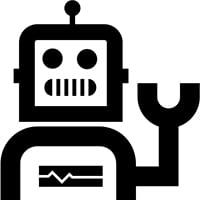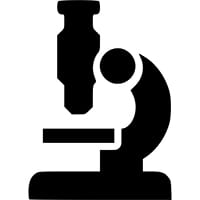NMR Training
Overview
There are four levels of training:
- Level0 – Account establishment and data access
- Level1 – Independent data acquisition on the automatic spectrometers
- Level2 – Manual data acquisition on the non-automated spectrometers
- Specialized Training – Variable Temperature, diffusion, kinetics, etc.
START HERE: Level0 Access
Everyone needing NMR starts with Level0. Oftentimes researchers begin by partnering with experienced labmates who acquire NMR data for them. The NMR facility supports such arrangements with Level0 access, providing new lab members accounts on the facility computers that enables them to copy data taken on their behalf. Level0 access is also the starting point for experienced researchers who develop a need for NMR in the middle of their projects, or for those who do not have labmates with NMR expertise. Everyone starts with Level0.
APPLYING FOR ACCESS: The first step is to fill out one of the paper forms available on the hallway wall outside either of the NMR laboratories, Searle 340 or GCIS E340. Completed forms should be returned to the “Completed forms” envelope next to the form supply envelope. These envelopes are monitored throughout the working day, as they have the facility manager’s attention.
Level1 Training
Level1 training enables operation of the automated NMR spectrometers in both Searle and GCIS. Training is split into two parts totaling about 4.5 hours. It is held either on one day with a break in between parts, or in two separate sessions, depending on attendee availability Training is practical, aiming to help researchers get the best data for their project goals.
- PART 1, IN-LAB ORIENTATION: Covers orientation to the physical lab space, overall equipment capabilities, magnet lab safety, tactile training on the handling of NMR samples and sampling accessories, sample preparation, submitting samples for automated acquisition, and rules for the limits on experiment length and number of samples. This session takes approximately 2 to 2.5 hours.
- PART 2, SOFTWARE & METHODS: Covers practical aspects of data processing, including techniques for improving data quality; introduction to the most common 1D and 2D experiments; and related topics. This session takes approximately 1.5 to 2 hours, and finishes with a quiz+review that takes 20-30 minutes.
CERTIFICATION TEST: Trainees must pass a certification test to gain instrument access. (A copy of the test is posted here.)The main purpose of the test is providing assurance that all essential parts of training are understood. It does NOT cover NMR theory, problem solving, or any other topic not explicitly covered in the training session. Tests are given on paper at the end of the in-person session. Immediately after the test is taken, we review everyone’s answers to identify points that need clarification.
ROOM ACCESS: Successful completion of Level1 training and certification entitles the user to access to both NMR rooms, Searle 340B and GCIS E340. The user’s physical university ID card will be momentarily scanned, and the facility manager will transmit permissions to the lock on the door to GCIS E340. The facility manager will then contact the PSD Dean’s office to begin authorization of the user’s ID card access to Searle 340B, the Searle main building door, and the GCIS main building door.
Level2 Training
Level2 training enables operation of the manually-operated spectrometers. It is conducted in one session in the Searle lab, lasting approximately 2.5 to 3 hours. It comprises two parts:
- PART 1, DESCRIPTIVE 1H SPECTRUM ACQUISITION. A 1D 1H spectrum is acquired with extensive description of the processes and hardware involved at each step. For instance, “locking” is preceded by a discussion of what locking is, why it is performed, what display elements provide insight into the lock observables, which software buttons are used to work with it, etc. A decommissioned probe and shimset are handed to trainees for inspection to provide insights into the nature of tuning and shimming.
- PART 2, 13C AND 2D ACQUISITION. A 1D 13C is set up in a new window, and orientation to its pulse sequence diagram is given. Sample heating due to 1H decoupling is identified, demonstrating the utility of dummy scans. 2D experiments such as COSY and HSQC are set up; various parameters are changed and their impact on total acquisition time is discussed. Two or three 2D experiments are queued up using the QU command, demonstrating how multiple experiments can be submitted at once. A 2D experiment is studied while acquisition is proceeding to gain practical insights into the nature of 2D NMR.
CERTIFICATION consists of each trainee demonstrating competence in acquiring a 1D 1H spectrum from login to logout.
RESERVATION CALENDAR ACCESS: After successful checkout, the user will be given an account on the online reservation system.
Flexibility
We are continuously improving our safe training procedures, so specific details may change with time.
Streamlined Scheme
The NMR Facility is an open-access laboratory environment, meaning researchers receive training on how to use the instruments and process their data. Every user must be trained and certified to operate the instruments in the manner of their intended use (automated acquisition, routine manual operation, and special techniques). The facility manager conducts all training. Training is available to anyone on campus and off-campus users who have made arrangements to use the facility.
We have two structured training sessions with certification, and provide training on special techniques as needed.
• LEVEL1 = Automated data aquisition and data processing, plus safety and tips for success.
• LEVEL2 = Manual operation of the instrument for routine room-temperature experiments
• INTENSIVE = Non-routine techniques that require extra training and caution to avoid instrument damage.
LEVEL1 - Automated
To start the training process, apply for Level0 access by filling out a paper account application form, available outside each of the NMR labs, Searle 340 and GCIS E340.
ALL new users are required to take Level1 training, including postdocs and senior researchers.
Topics covered:
- Safety in the NMR lab
- Orientation to the equipment and facility resources
- Sample preparation requirements and best practices
- Proper care of NMR tubes
- Submitting a sample to the autosampler-equipped instrument
- Lab-specific sample management policies
- Data processing, including tips and tricks for getting more information without acquiring new spectra
- Data access and transfer procedures
More details here:
https://chemnmrlab.uchicago.edu/training1/
LEVEL2 - Manual
One-on-one Level2 training is being conducted on a pilot basis. Contact the facility manager to schedule training.
LEVEL2 training is for researchers who prefer to operate the instruments themselves, especially if they need to proceed to use advanced techniques covered in SPECIAL training. After LEVEL2 training, researchers may independently conduct routine NMR experiments with samples only at room temperature.
Topics include:
- Orientation to instrument components
- How to check what probe is in the magnet and which is best for the application
- Introduction to the Bruker Topspin 3.6 “flow” interface
- What locking, tuning, and shimming are for and why we perform them
- Introduction to important acquisition parameters via the AcquPars tab of a 1D 1H spectrum
- Acquisition of a 1D 1H spectrum
- Creation of new experiments and management of multiple experiment windows
- Acquisition of 13C 1D and DEPT135 spectra, with orientation to their meaning
- Introduction to routine 2D experiments via setup and acquisition of COSY, HSQC, and HMBC experiments
- How to queue up experiments to run after one another automatically
Certification
The certification tests consists of successfully acquiring a 1D 1H spectrum on a sample of interest to the researcher.
Certification grants access to ALL the facility’s manually-operated instruments, including those in both Searle and GCIS. LEVEL2 certification does NOT permit researchers to perform experiments at temperatures other than room temperature.
More details here:
https://chemnmrlab.uchicago.edu/training2/
Intensive Training
“VT EXPERIMENT” TRAINING IS REQUIRED for any operation above or below room temperature.
(“VT” = “variable temperature”) VT experiments risk damage to the magnet and probe hardware. Special training is required to keep the instruments functioning properly. Furthermore, VT training covers best practices and methods for determining sample temperatures accurately.
Researchers are encouraged to explore new techniques on their own using the paper manuals provided in each NMR lab. The “Topspin 3.x Introduction to NMR Methods” and “Topspin 3.x Advanced NMR Methods” manuals published by Bruker offer excellent step-by-step setup instructions for many experiments.
The facility manager delights in introducing researchers to new techniques that will help their science! Contact the manager to schedule an appointment for training in
- 1D NOE and 2D NOESY data acquisition
- T1 relaxation measurement
- DOSY/diffusion measurement
- “Heteronuclear” data acquisition, e.g. 31P, 19F, 2H, 7Li, 11B, etc.
- Other application
Contact the facility manager if you wish consultation about which technique(s) to use for solving specific scientific questions.
More details here:
https://chemnmrlab.uchicago.edu/training-intensive/



